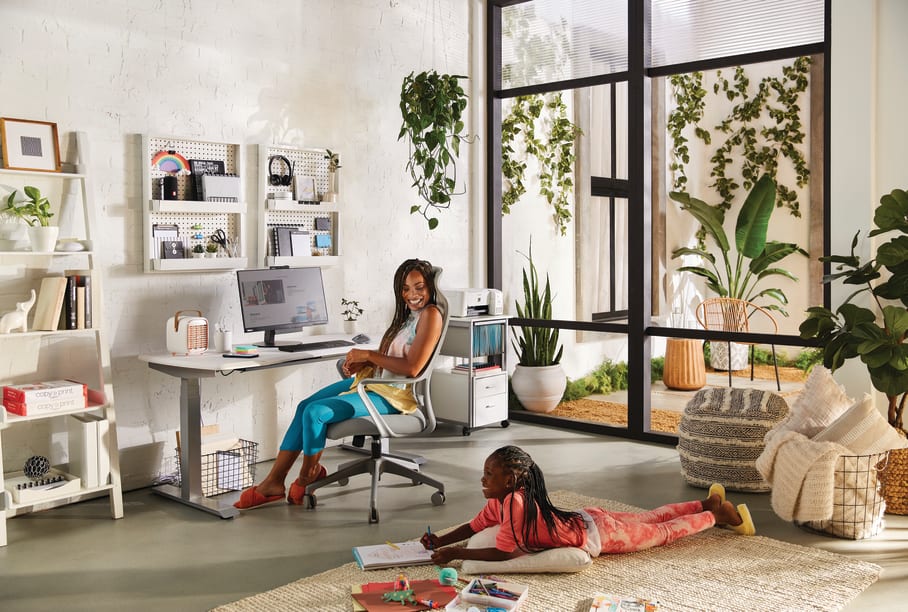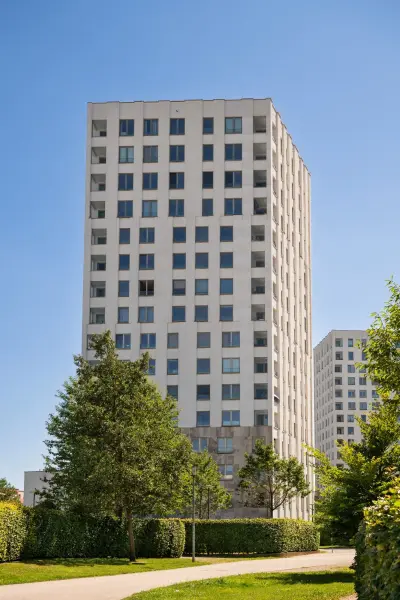
The Impact of Remote Work on Real Estate Demand in 2024
The Impact of Remote Work on Real Estate Demand in 2024
The COVID-19 pandemic brought about significant changes in how people work, and one of the most lasting impacts has been the rise of remote work. In 2024, remote work continues to influence various aspects of life, and perhaps one of the most noticeable effects is its impact on real estate demand. With more individuals working from home than ever before, many are reevaluating their living arrangements, particularly when it comes to location, space, and amenities.
As the remote work trend persists, suburban areas are experiencing a surge in demand, with many homebuyers and renters choosing to leave crowded city centers in search of larger homes, more outdoor space, and a higher quality of life. This shift in preferences is reshaping the real estate landscape, with significant implications for both buyers and the industry as a whole.

1. The Shift from Urban to Suburban Living
In the past, city living was often synonymous with convenience, access to work opportunities, and proximity to cultural and social hubs. However, with the widespread adoption of remote work, many people are no longer tied to city centers for their jobs. In fact, a growing number of employees have embraced flexible or fully remote work options, enabling them to live anywhere they choose.
As a result, there has been a noticeable shift away from urban areas toward suburban regions. Many individuals and families are opting for homes in less congested, quieter neighborhoods where they can enjoy more space, larger yards, and a better overall environment for both work and leisure. This migration is not only influenced by the desire for more room but also by the affordability of homes in suburban areas, which often offer more competitive prices compared to expensive urban centers.
Suburban areas, once seen as less desirable for young professionals and tech-savvy workers, have become more appealing as remote work continues to gain traction. These areas are attracting a diverse range of buyers, including young professionals, families, and even retirees looking for a change in lifestyle. Suburbs are now seen as more practical and comfortable for those who spend a significant amount of time working from home.
2. The Demand for Larger Homes with Dedicated Workspaces
With remote work becoming a long-term fixture for many people, the need for homes that cater to work-life balance has increased. In 2024, buyers are prioritizing homes with dedicated spaces for offices or study areas where they can work productively without distractions. The trend toward larger homes is particularly evident in suburban markets, where more square footage is available at a lower price point.
Homebuyers are looking for properties that offer flexibility, such as additional rooms that can be converted into home offices or studios. Open floor plans that can accommodate home offices without compromising the overall flow of the home are in high demand. In fact, many developers and real estate agents are now highlighting the importance of creating home environments that can easily transition from work to relaxation.
This demand for home offices and work-friendly spaces is not only affecting new builds but also prompting homeowners to renovate their existing properties. Homeowners are willing to invest in adding dedicated office spaces, soundproof rooms, or even outdoor workspaces, providing them with more comfort and privacy during work hours.
3. The Role of Technology in Suburban Real Estate
As remote work has become more prevalent, technology has played a crucial role in enabling people to work efficiently from home. This shift has prompted real estate developers to integrate smart technologies into suburban homes, making them more appealing to remote workers. High-speed internet, robust Wi-Fi networks, and tech-friendly infrastructure are now considered essential for potential buyers.
Many homebuyers are prioritizing homes that are well-equipped to support remote work needs, such as homes with dedicated spaces for video conferencing, soundproof rooms for calls, and advanced home office setups. The presence of high-speed internet access is a major selling point, as remote workers require reliable connectivity to stay productive.
In response, developers are adapting their designs to incorporate these technological features. This has led to a rise in the construction of “smart homes” in suburban areas, equipped with automated systems, energy-efficient appliances, and high-tech security features. The integration of technology in homes is helping to make suburban areas more attractive to tech-savvy remote workers.

4. Impact on Rental Markets in Suburban Areas
The shift to remote work is not only affecting homeownership trends but also influencing the rental market. Suburban areas are seeing an uptick in demand for rental properties as more people seek flexible living arrangements. Many remote workers are opting for rentals in suburban regions, where they can enjoy larger spaces and a more relaxed lifestyle, while still being able to commute into the city occasionally if necessary.
In particular, younger workers who may not yet be ready to buy a home are seeking rental properties that offer the benefits of suburban living, such as more space, outdoor areas, and quieter surroundings. With the option of remote work, these individuals no longer feel the need to live in close proximity to city offices or social hubs.
This shift is contributing to rising rental prices in suburban areas, as landlords and property managers cater to the growing demand for spacious, comfortable, and well-connected rental properties. Suburbs that were once considered less desirable are now becoming prime locations for rental properties, as remote workers look to take advantage of the affordability and lifestyle benefits offered by these areas.
5. Real Estate Investment Opportunities in Suburban Markets
The rise of remote work has also opened up new opportunities for real estate investors. As demand for suburban homes continues to grow, investors are increasingly turning their attention to suburban markets, looking for properties that can be renovated or developed into desirable living spaces for remote workers.
In particular, properties that offer room for expansion, such as larger lots or homes with underutilized spaces like basements and attics, are becoming prime targets for investment. Investors can renovate these spaces to create functional home offices or additional bedrooms, increasing the value of the property and attracting potential buyers or renters who are seeking work-friendly homes.
Moreover, the growing demand for suburban living is prompting more developers to build new residential communities that cater specifically to remote workers. These developments are often designed with smart home features, energy-efficient systems, and community amenities that support remote work, such as co-working spaces and high-speed internet infrastructure.

6. The Future of Remote Work and Real Estate Demand
As remote work continues to evolve, it’s likely that the trend toward suburban living will persist well beyond 2024. Many companies are adopting permanent remote or hybrid work policies, which will continue to reduce the need for employees to live in close proximity to urban offices. As a result, the demand for homes in suburban areas is expected to remain strong, with homebuyers and renters continuing to prioritize space, affordability, and comfort.
In the long term, this trend may also lead to the further decentralization of the real estate market. Smaller cities and towns may see increased demand for homes, as workers who no longer need to commute to major metropolitan areas seek more affordable and spacious options in these regions.

Conclusion
The impact of remote work on real estate demand in 2024 is undeniable. As more people embrace remote work as a long-term lifestyle choice, suburban areas are becoming increasingly attractive for homebuyers and renters alike. Larger homes, dedicated workspaces, and access to technology are now key considerations for those looking to make a move. Real estate developers, investors, and agents must adapt to this shift by catering to the changing needs of remote workers, ensuring that properties in suburban markets remain competitive and desirable.
In the years to come, the evolving dynamics of remote work will continue to shape the real estate landscape, driving demand for suburban properties and creating new opportunities for buyers, renters, and investors alike.











